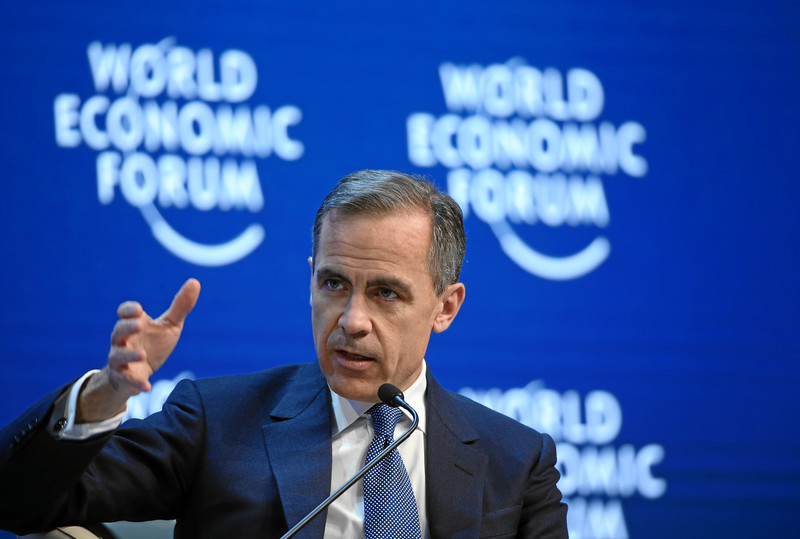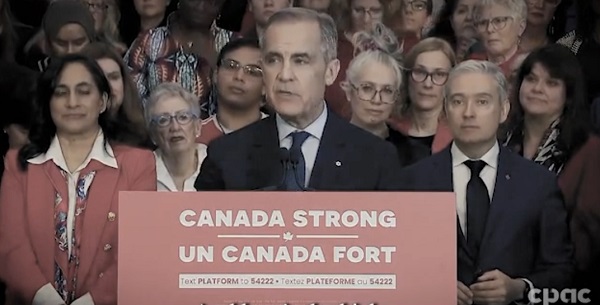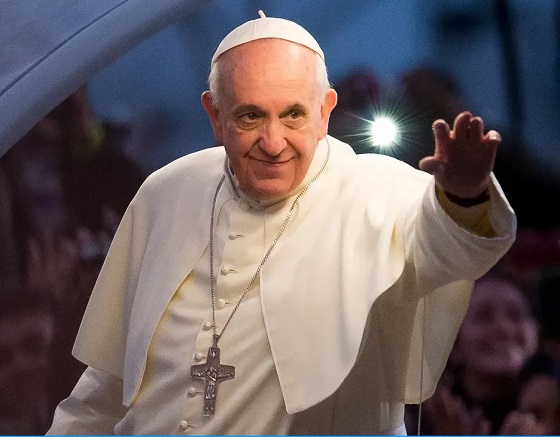Business
Mark Carney is Planning to Hide His Revised, Sneaky Carbon Tax and This Time, No Rebates


Liberal leadership candidate Mark Carney seems to think giving you a discount code on a new furnace or some extra insulation is the best way to help you with affordability.
And he’s going to pay for the discounts by hitting businesses like fuel refineries and power plants with a hidden carbon tax. Of course, those businesses will just pass on the cost.
Bottom line: You still get hit with that hidden carbon tax when you buy gas or pay your bills.
But it gets worse.
Prime Minister Justin Trudeau at least attempted to give you some of the carbon tax money back through rebates. The Parliamentary Budget Officer consistently made it clear the rebates don’t cover all of the costs. But at least you could spend the money on the things you need most.
But under Carney’s “affordability” plan, you don’t get cash to pay down your credit card or buy groceries. You can only use the credits to buy things like e-bikes and heat pumps.
Here’s how Carney explained it.
“We will have the big polluters pay for climate incentives by developing and integrating a new consumer carbon credit market into the industrial pricing system,” Carney told a Halifax crowd. “While we still provide price certainty for households when they make climate smart choices.”
Translation: Carney would still make Canadians pay, but he’ll only help them with affordability if they’re making “smart” choices.
Sound familiar? This is a lot like the scheme former opposition leader Erin O’Toole ran on. And it ended his political career.
Carney’s carbon tax plan is terrible for two reasons.
First: it’s sneaky. Carney wants to hide the cost of the carbon tax. A powerplant running on natural gas is not going to eat the cost of Carney’s carbon tax; it will pass that expense down to ordinary people who paying the bills.
Second: as anemic as the Trudeau government rebates are, at least Canadians could use the money for the things they need most. It’s cash they can put it towards the next heating bill, or buy a pair of winter boots, or pay for birthday party decorations.
That kind of messy freedom makes some central planning politicians twitchy.
Here’s the thing: half of Canadians are broke and a discount on a new Tesla probably won’t solve their problems.
About 50 per cent are within $200 each month of not being able to make the minimum payments on their bills.
With the cost of groceries up $800 this year for a family of four, people are watching flyers for peanut butter. Food banks have record demand.
Yet, Carney wants Canadians to keep paying the carbon tax while blindfolded and then send thank-you cards when they get a few bucks off on a solar panel they can’t afford.
Clearly the architects of Carney’s plan haven’t spent many sleepless nights worrying about paying rent.
One of Carney’s recent gigs was governor of the Bank of England where he was paid $862,000 per year plus a $449,000 housing allowance.
With ermine earmuffs that thick, it’s hard to hear people’s worries.
About a thousand Canadians recently posted home heating bills online.
Kelly’s family in Northern Ontario paid $134 in the carbon tax for December’s home heating. Lilly’s household bill near Winnipeg was $140 in the carbon tax.
The average Alberta household will pay about $440 extra in the carbon tax on home heating this year.
After the carbon tax is hiked April 1, it will add an extra 21 cents to a litre of gasoline and 25 cents per litre of diesel. Filling a minivan will cost about $15 extra, filling a pickup truck will cost about $25 extra, and a trucker filling a big rig will have to pay about $250 extra in the carbon tax.
Trudeau’s carbon tax data is posted online.
Carney’s carbon tax would be hidden.
Carney isn’t saying the carbon tax is an unfair punishment for Canadians who are trying to drive to work and heat their homes.
He says the problem is “perception.”
“It has become very divisive for Canadians,” Carney told his Halifax crowd about the carbon tax. “It’s the perceptions of the negative impacts of the carbon tax on households, without fully recognizing the positive impacts of the rebate.”
Carney isn’t trying to fix the problem. He’s trying to hide it. And he wants Canadians to be happy with discount codes on “smart” purchases instead of cash.
Kris Sims is the Alberta Director for the Canadian Taxpayers Federation.
2025 Federal Election
Carney’s budget means more debt than Trudeau’s

The Canadian Taxpayers Federation is criticizing Liberal Party Leader Mark Carney’s budget plan for adding another $225 billion to the debt.
“Carney plans to borrow even more money than the Trudeau government planned to borrow,” said Franco Terrazzano, CTF Federal Director. “Carney claims he’s not like Trudeau and when it comes to the debt, here’s the truth: Carney’s plan is billions of dollars worse than Trudeau’s plan.”
Today, Carney released the Liberal Party’s “fiscal and costing plan.” Carney’s plan projects the debt to increase consistently.
Here is the breakdown of Carney’s annual budget deficits:
- 2025-26: $62 billion
- 2026-27: $60 billion
- 2027-28: $55 billion
- 2028-29: $48 billion
Over the next four years, Carney plans to add an extra $225 billion to the debt. For comparison, the Trudeau government planned on increasing the debt by $131 billion over those years, according to the most recent Fall Economic Statement.
Carney’s additional debt means he will waste an extra $5.6 billion on debt interest charges over the next four years. Debt interest charges already cost taxpayers $54 billion every year – more than $1 billion every week.
“Carney’s debt binge means he will waste $1 billion more every year on debt interest charges,” Terrazzano said. “Carney’s plan isn’t credible and it’s even more irresponsible than the Trudeau plan.
“After years of runaway spending Canadians need a government that will cut spending and stop wasting so much money on debt interest charges.”
Business
Canada Urgently Needs A Watchdog For Government Waste

From the Frontier Centre for Public Policy
By Ian Madsen
From overstaffed departments to subsidy giveaways, Canadians are paying a high price for government excess
Not all the Trump administration’s policies are dubious. One is very good, in theory at least: the Department of Government Efficiency. While that term could be an oxymoron, like ‘political wisdom,’ if DOGE is useful, so may be a Canadian version.
DOGE aims to identify wasteful, duplicative, unnecessary or destructive government programs and replace outdated data systems. It also seeks to lower overall costs and ensure mechanisms are in place to evaluate proposed programs for effectiveness and value for money. This can, and usually does, involve eliminating some departments and, eventually, thousands of jobs. Some new roles within DOGE may need to become permanent.
The goal in the U.S. is to lower annual operating costs and ensure that the growth in government spending is lower than in revenues. Washington’s spending has exploded in recent years. The U.S. federal deficit exceeds six per cent of gross domestic product. According to the U.S. Treasury Department, annual debt service cost is escalating unsustainably.
Canada’s latest budget deficit of $61.9 billion in fiscal 2023–24 is about two per cent of GDP, which seems minor compared to our neighbour. However, it adds to the federal debt of $1.236 trillion, about 41 per cent of our approximate $3 trillion GDP. Ottawa’s public accounts show that expenses are 17.8 per cent of GDP, up from about 14 per cent just eight years ago. Interest on the escalating debt were 10.2 per cent of revenues in the most recent fiscal year, up from just five per cent a mere two years ago.
The Canadian Taxpayers Federation (CTF) continually identifies dubious or frivolous spending and outright waste or extravagance: “$30 billion in subsidies to multinational corporations like Honda, Volkswagen, Stellantis and Northvolt. Federal corporate subsidies totalled $11.2 billion in 2022 alone. Shutting down the federal government’s seven regional development agencies would save taxpayers an estimated $1.5 billion annually.”
The CTF also noted that Ottawa hired 108,000 more staff in the past eight years at an average annual cost of over $125,000. Hiring in line with population growth would have added only 35,500, saving about $9 billion annually. The scale of waste is staggering. Canada Post, the CBC and Via Rail lose, in total, over $5 billion a year. For reference, $1 billion would buy Toyota RAV4s for over 25,600 families.
Ottawa also duplicates provincial government functions, intruding on their constitutional authority. Shifting those programs to the provinces, in health, education, environment and welfare, could save many more billions of dollars per year. Bad infrastructure decisions lead to failures such as the $33.4 billion squandered on what should have been a relatively inexpensive expansion of the Trans Mountain pipeline—a case where hiring better staff could have saved money. Terrible federal IT systems, exemplified by the $4 billion Phoenix payroll horror, are another failure. The Green Slush Fund misallocated nearly $900 million.
Ominously, the fast-growing Old Age Supplement and Guaranteed Income Security programs are unfunded, unlike the Canada Pension Plan. Their costs are already roughly equal to the deficit and could become unsustainable.
Canada is sleepwalking toward financial perdition. A Canadian version of DOGE—Canada Accountability, Efficiency and Transparency Team, or CAETT—is vital. The Auditor General Office admirably identifies waste and bad performance, but is not proactive, nor does it have enforcement powers. There is currently no mechanism to evaluate or end unnecessary programs to ensure Canadians will have a prosperous and secure future. CAETT could fill that role.
Ian Madsen is the Senior Policy Analyst at the Frontier Centre for Public Policy.
-

 2025 Federal Election2 days ago
2025 Federal Election2 days agoCarney’s Fiscal Fantasy: When the Economist Becomes More Dangerous Than the Drama Teacher
-

 International15 hours ago
International15 hours agoPope Francis has died aged 88
-

 2025 Federal Election14 hours ago
2025 Federal Election14 hours agoCarney’s budget means more debt than Trudeau’s
-

 2025 Federal Election2 days ago
2025 Federal Election2 days agoA Perfect Storm of Corruption, Foreign Interference, and National Security Failures
-

 Business15 hours ago
Business15 hours agoCanada Urgently Needs A Watchdog For Government Waste
-

 2025 Federal Election2 days ago
2025 Federal Election2 days agoCampaign 2025 : The Liberal Costed Platform – Taxpayer Funded Fiction
-

 Energy15 hours ago
Energy15 hours agoIndigenous-led Projects Hold Key To Canada’s Energy Future
-

 International11 hours ago
International11 hours agoPope Francis Dies on Day after Easter







